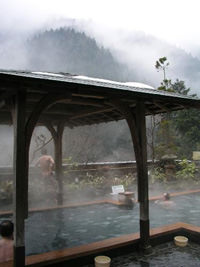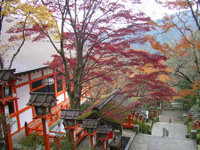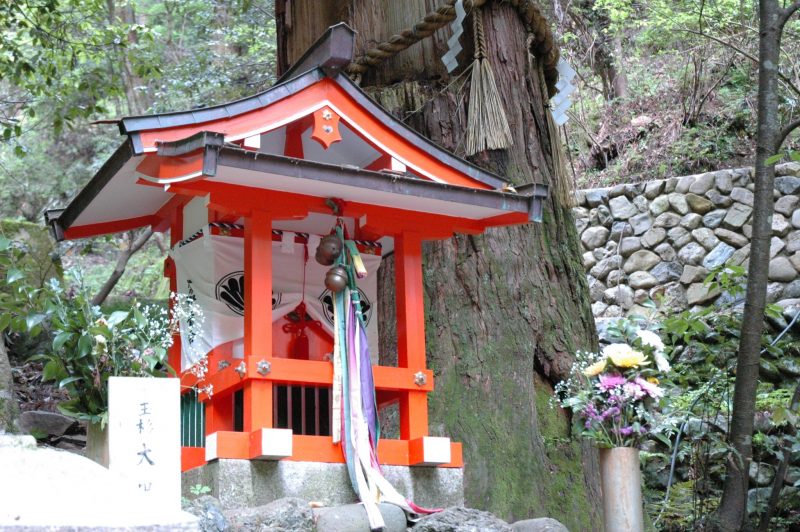Kurama is a rural town in the northern mountains of Kyoto City, less than one hour from the city center. Kurama is best known for its temple Kurama-dera and its hot spring, one of the most easily accessible hot springs from Kyoto.

Outdoor and indoor baths can be enjoyed at Kurama Onsen, located at the upper end of the town of Kurama. It can be reached in a 10 minute walk from the train station along the town’s only road or along a nature trail following the river. Guests, who are staying at the ryokan, can use the baths for free, while day-trippers pay 2500 Yen per person to use all of them or 1100 Yen per person to use the outdoor pool (rotemburo) only. Towels are also available for rental.
Kurama’s main attraction, Kurama-dera, is a Buddhist temple located in the wooded slopes above the town. This is a magical place that gains a lot of its power from its brilliant natural setting. The temple also has a fascinating history. In 770 the monk Gantei left Nara’s Toshodai-ji in search of a wilderness sanctuary in which to meditate. Wandering in the hills north of Kyoto, he came across a white horse that led him to the valley known today as Kurama. After seeing a vision of the deity Bishamon-ten, guardian of the northern quarter of the Buddhist heaven, Gantei established Kurama-dera just below the peak of Kurama-yama. Originally belonging to the Tendai school of Buddhism, Kurama has been independent since 1949, describing its own brand of Buddhism as Kurama-kyo.

From its main gate in the town’s center, the main buildings can be reached in a 30-45 minute climb up the mountain. A cablecar (200 Yen one way) leads halfway up. The entrance to the temple is just up the hill from Kurama Station. The trail is worth taking (if it’s not too hot), since it winds through a forest of towering old-growth cryptomeria trees, passing Yuki-jinja on the way. Near the peak, there is a courtyard dominated by the Honden; behind this a trail leads off to the mountain’s peak.
Along the ascent to Kurama-dera stands Yuki Jinja, a shrine famous for its Fire Festival (Kurama Hi Matsuri), held annually on October 22. At the top, you can take a brief detour across the ridge to Osugi-gongen, a quiet shrine in a grove of trees. Behind the temple’s main building, the hiking trail continues through the forest to Kibune, a small town in the neighboring valley. The hike from Kurama-dera to Kibune is steep at times and takes about one hour. On the way down are two mountain shrines, Sojo-ga-dani Fudo-do and Okuno-in Mao-den, which make pleasant rest stops. Kibune offers several ryokan and restaurants, which serve meals on terraces built along the river during the warmer months of the year. At Kibune Shrine you can obtain a unique type of omikuji (fortune telling paper slips) that displays your fortune after it has been dipped into the water.
How to Get There
Kurama is connected with central Kyoto by the Eizan Railway. The one way trip along the Eizan Kurama Line from Demachi-Yanagi Station to Kurama Station takes 30 minutes and costs 410 Yen. Trains depart every 15 to 20 minutes.
In order to access Kibune, get off at the second to the last station, Kibune-guchi Station, from where you can walk to Kibune along the road in about 20-30 minutes or take Kyoto Bus number 33 (5 minutes, 160 Yen).
The fastest way to reach Demachi-Yanagi Station from Kyoto Station is by taking the JR Nara Line to Tofukuji Station (140 Yen, 2 minutes), where you can transfer to the Keihan Main Line to Demachi-Yanagi Station
(260 Yen, 10 minutes).





